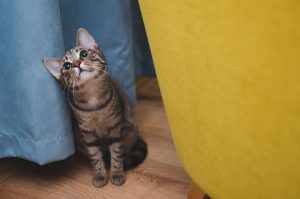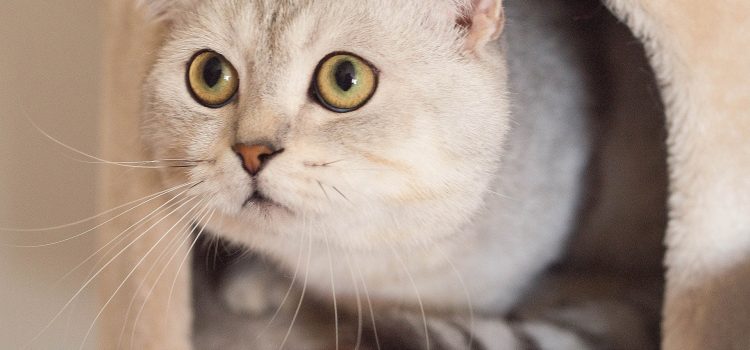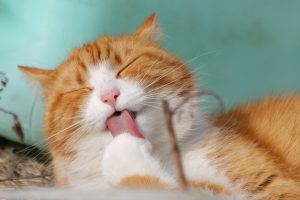
How Often Do Cats Go in Heat?
Introduction
Cats are fascinating creatures known for their independence and unique behaviours. One such behaviour is their reproductive cycle, often referred to as the estrus cycle or “heat.” Understanding how often cats go in heat is crucial for cat owners and breeders alike. In this article, we will explore the frequency of a cat’s heat cycle, its duration, and signs to look out for and provide helpful insights to ensure the well-being of your feline companion.

Understanding the Feline Estrus Cycle
The feline estrus cycle is a recurring hormonal process in non-spayed female cats. It is the period during which a cat is receptive to mating and can become pregnant. Hormones regulate this cycle, and its frequency and duration can vary depending on various factors.
The Frequency of Heat Cycles
A cat experiences heat cycles every two to three weeks during the breeding season. The breeding season typically begins in spring and continues until early fall. However, it’s important to note that not all cats adhere strictly to this schedule, as some can go into heat outside of the breeding season.

Signs and Symptoms of a Cat in Heat
When a cat is in heat, she exhibits specific behaviours and physical signs. These signs can vary from cat to cat but often include the following:
Increased vocalization: Cats in heat tend to become more vocal and may emit loud, persistent yowling sounds.
Restlessness and agitation: A cat in heat may display restlessness and seek attention more actively.
Frequent urination: Cats in heat may urinate more frequently to mark their territory and attract potential mates.
Rolling and rubbing: A cat in heat may proceed on the floor and rub against furniture or people.
Elevated rear end: Female cats in heat assume a mating position with their back end raised in the air.
Managing Your Cat’s Heat Cycle
Managing a cat’s heat cycle involves understanding her needs and providing appropriate care. Here are some tips to help you manage your cat’s heat cycle:
Provide a calm and secure environment: Creating a safe and quiet space can help alleviate stress and anxiety during this time.
Offer plenty of attention and playtime: Engaging with your cat through play and social interaction can help distract her and provide mental stimulation.
Monitor outdoor access: If your cat is allowed outdoors, consider limiting her access during heat cycles to prevent mating and potential pregnancy.

Spaying and Neutering: A Solution for Heat Cycles
Spaying (for females) and neutering (for males) are surgical procedures that can prevent heat cycles in cats. Spaying involves removing the ovaries and uterus, while neutering involves removing the testicles. These procedures not only eliminate heat cycles but also offer other health benefits and help control the feline population.
Health Concerns During Heat Cycles
While heat cycles are a normal part of a cat’s reproductive cycle, specific health concerns can arise. These include an increased risk of mammary gland tumours, pyometra (a potentially life-threatening uterus infection), and reproductive tract diseases. Regular veterinary check-ups and spaying can significantly reduce these risks.
Pregnancy and Reproduction in Cats
If your cat becomes pregnant during her heat cycle, providing appropriate care and support is essential. Ensure a balanced diet, regular veterinary care, and a comfortable nesting area for the expectant mother. Familiarize yourself with the signs of labour to be prepared for the delivery of the kittens.

Conclusion
Understanding the frequency of a cat’s heat cycles is vital for cat owners. By recognizing the signs, managing the heat cycle appropriately, and considering spaying or neutering, you can provide your feline companion with a safe and healthy environment. Remember to consult your veterinarian for personalized advice based on your cat’s specific needs.
FAQs (Frequently Asked Questions)
Q1: Can a cat get pregnant during its first heat cycle?
A1: Yes, a cat can become pregnant during its first heat cycle. Cats can reach sexual maturity as early as five to six months.
Q2: How long does a cat’s heat cycle last?
A2: A cat’s heat cycle typically lasts about one to two weeks. However, this can vary depending on the individual cat.
Q3: Will spaying my cat stop her from going into heat?
A3: Spaying your cat will prevent her from going into heat. The procedure removes the reproductive organs responsible for heat cycles.
Q4: Can a cat’s heat cycle attract male cats from a distance?
A4: Yes, the vocalizations and scent signals emitted by a cat in heat can attract male cats from a distance.
Q5: Can I use medication to suppress my cat’s heat cycle?
A5: There are medications available to suppress heat cycles temporarily, but they should only be used under the guidance of a veterinarian.
In conclusion, understanding how often cats go in heat is crucial for cat owners. By recognizing the signs, managing the heat cycle appropriately, and considering spaying or neutering, you can ensure the well-being of your feline companion. Remember to consult with your veterinarian for personalized advice.





































Comments
Dog Coughing and Gagging: Causes , Symptoms and Treatment Options
Scottish Fold Cat: A Breed’s Most Famous Gene is the Reason They’re Resilient to Fatal Diseases
Facts about Dogs and Which of Them Are True
Butter Corn Snake : Ultimate Care,Feeding PRO TIPS